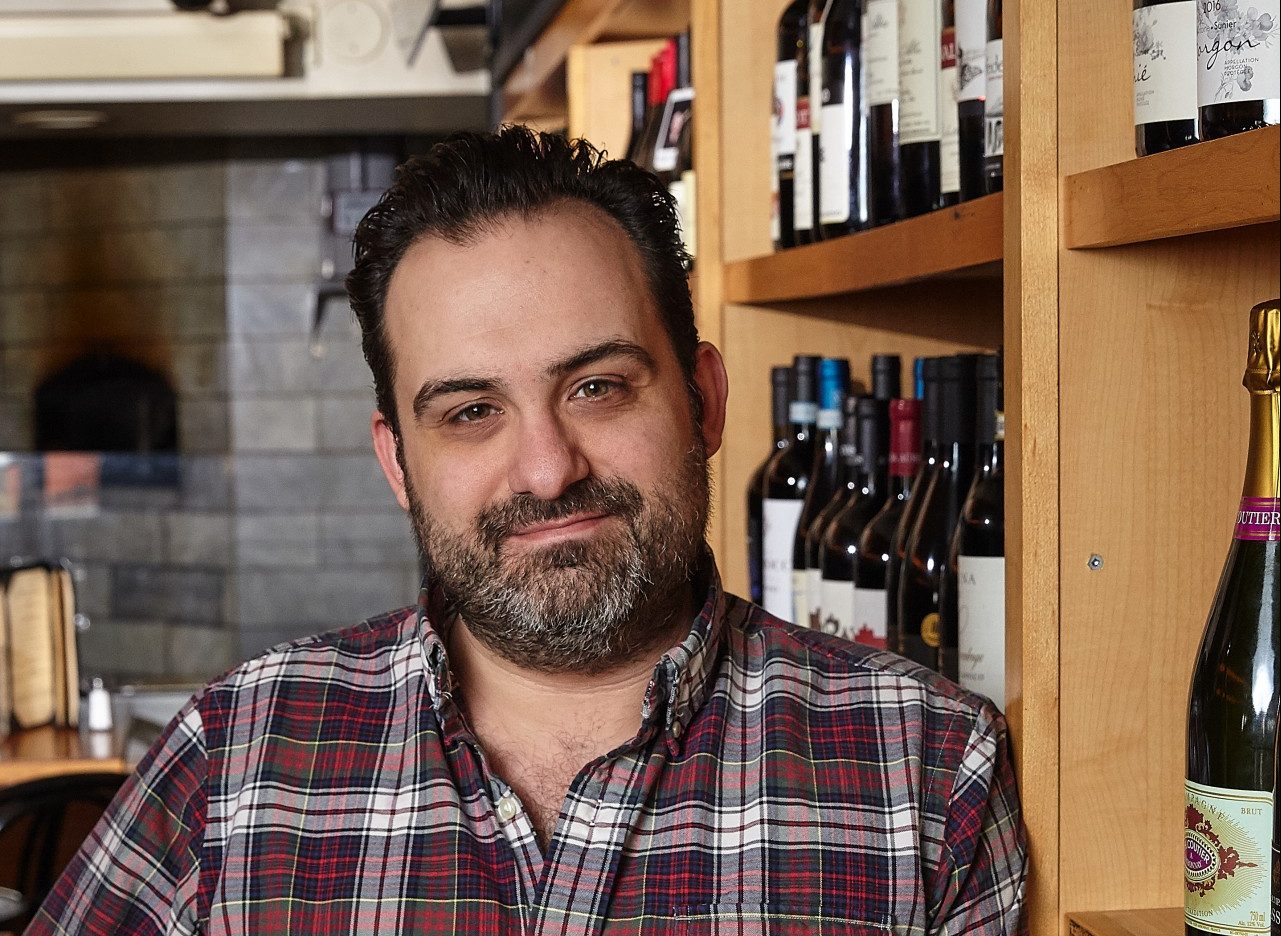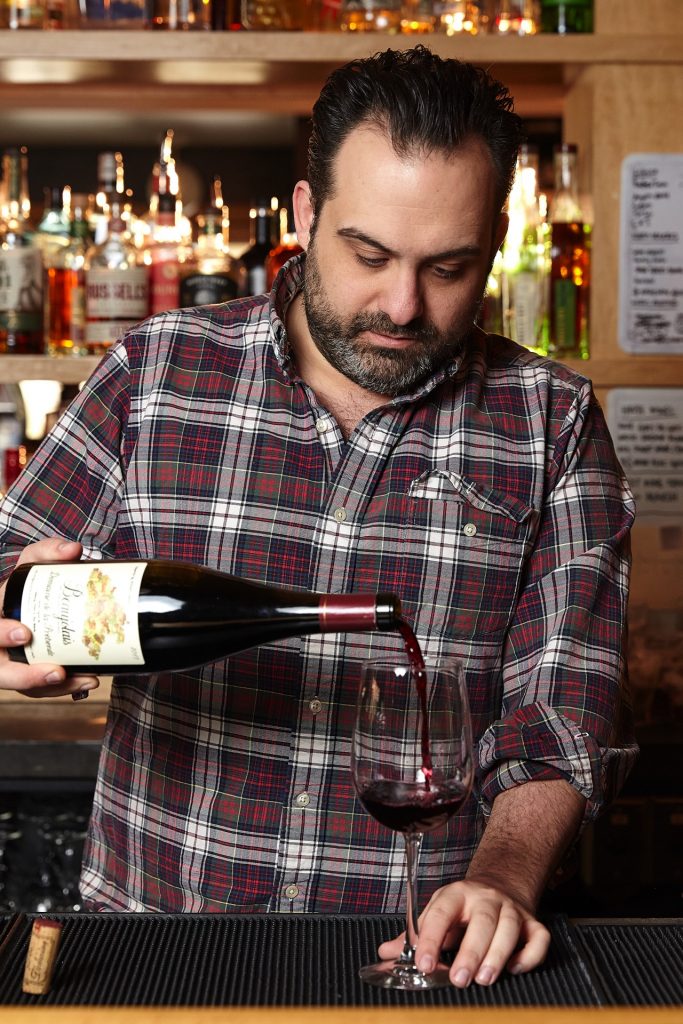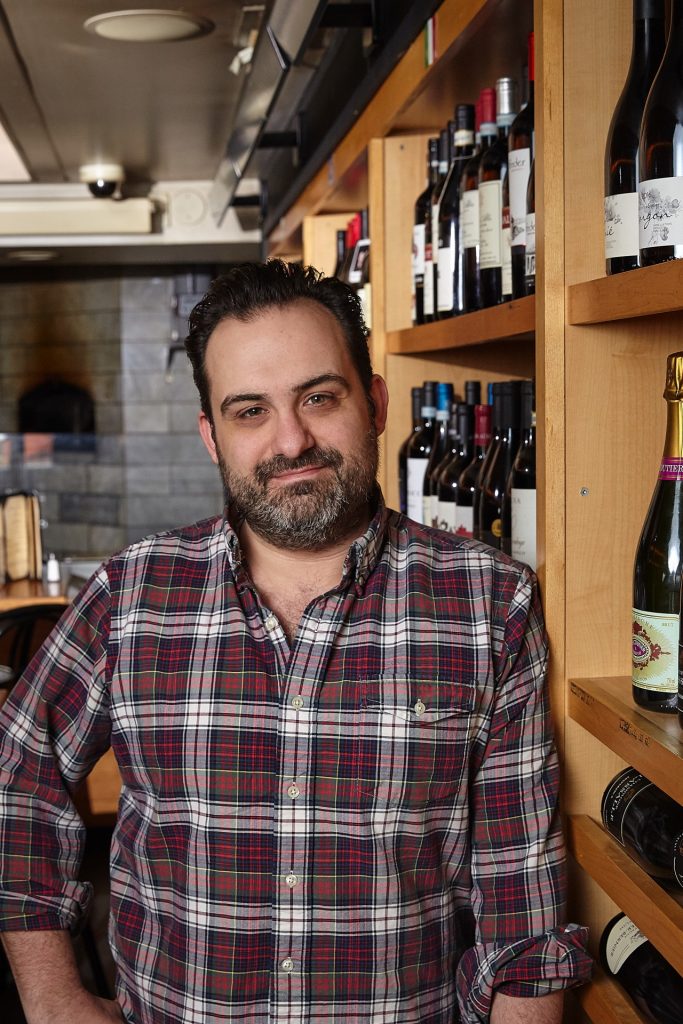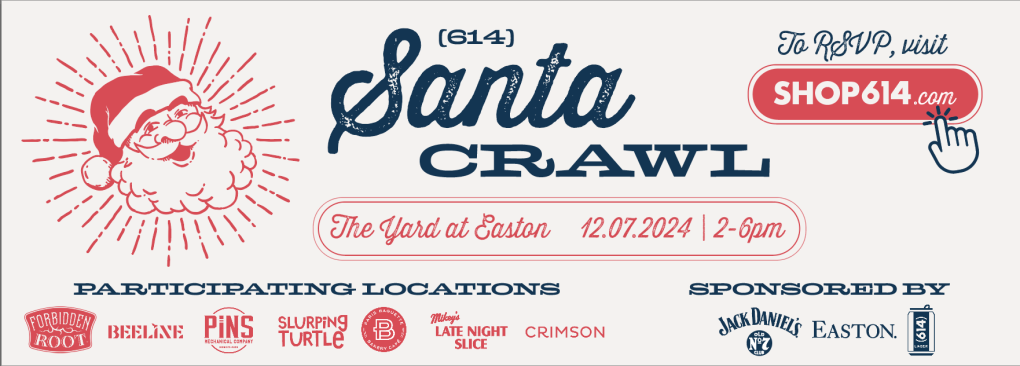Raise A Glass with A&R’s resident wine expert, Collin Minnis

What’s better than a glass of good wine and good conversation? A glass of good wine and good conversation with a wine expert.
Collin Minnis, the Beverage Director and Bar Creative for A&R Creative Group, knows wine. He’s part of the team at The Market Italian Village, and he’s out there on your behalf, finding unique wines that you won’t find on trip around the grocery store. As a demonstration, he pours me a glass of a Julien Sunier Morgon appellation (“a sommelier’s darling”) and we get started.
I confess that I judge a bottle by its label. Fancy labels with calligraphy are boring and intimidating. Pretty wine labels are cool and adventurous. Minnis admits that some young winemakers are responding to that bias.
“The label is part of the game,” he says. “That’s half the battle—getting you to pick up the bottle. There’s some really good, interesting wines that have cool labels.” He shows me a few. A gorgeous white with an abstract, postmodern label that looks like a mural. A fun red with a gnarly grapevine design. So how do I find out what I’m holding in my hand? Is it all kitsch, or an actual package deal?

To get a better look behind the label, Minnis mentions the label-scanning Vivino app. But for the most personal advice, Minnis suggests shopping in smaller stores and wine boutiques. You’ll be able to ask more questions, and get answers from the experts. At The Market, you’re going to find intriguing descriptions in place of a point system, descriptions that will invite your questions, such as this word picture for a Concerto Lambrusco:
I drink like a portly, blonde toddler lost in a blackberry patch. How many berries can I fit into my mouth before I choke and die in ecstasy? A frizzante Italian red, this dry Lambrusco is refreshing and vibrant with hits of strawberry, raspberry and blackberry.
The questions don’t stop there. Looking for a low-alcohol wine? Minnis recommends checking out the Matthiasson Winery, which produces a number of wines from Napa and Sonoma, all with moderate levels of alcohol. Beaujolais reds or Vinho Verdes are also good bets for those not looking to get too buzzed.
The more-educated wine drinker has become a trend in itself, and many of them want to know the answer to one of the more recent controversies to hit the world of wine: Are natural wines a thing, or are they just bad wines?
Natural, or organic wines, are produced using sustainable farming practices and minimal chemical intervention. They also receive a fair amount of criticism for sometimes having a cloudy appearance or “smelling like a barnyard” (or so I’ve read). What’s going on?
“[Natural wine] gets a little bit of a bad rap because there are bad natural wines that people are making and kinda slapping that tag on there just to sell it,” said Minnis. “A lot of times they are going to be like wine you haven’t had before. They can be a little funkier, a little gamier.”
BROUGHT TO YOU BY
But natural wines, which can be produced in many ways, shouldn’t all be lumped under the same umbrella. Minnis points to the glass in my hand, which is considered a natural wine. Absent of chemical manipulation, the genuine expression of the grape, many feel, is often captured in a natural wine.
“The idea is basically a ‘less-is-more’ mentality,” says Minnis. “They’re using native yeasts, not inoculated yeasts. They’re unfined. They’re unfiltered. It’s a really good representation of how the grape should drink.”
Wines are usually filtered through egg whites, so a natural (unfiltered) wine is also ideal for the vegan wine drinker. But the term “natural” is without a clear definition and therefore tends to lump wines of differing qualities together, so again, Minnis suggests looking past the label.
Minnis also shows me some examples of increasingly available orange wines—wines made from white wine grapes where the grape skins remain in contact with the juice, resulting in a distinctive amber color.
What should be the go-to wine in your collection?
“I think sparkling wines are always fantastic,” Minnis said. “Any time of day, any occasion. It’s fun. It’s enjoyable. You can drink it with food or not. Literally, it goes with almost everything.”

Given the flexibility of sparkling wines, Minnis predicts that more than just your hipster wine friend will start to party with “pet-nats,” (petillant naturals) roughly the equivalent of natural wines in bubbling form.
Besides quality and uniqueness, Minnis is always on the hunt for a wine with a good story. In fact, one of the wine-of-the-month clubs The Market runs is called “Story Time,” where subscribers will learn about the interesting people and processes behind the bottle. (One of his favorites involves a dirt-poor, yet eventually successful, young winemaker who was disowned after getting revenge on his family’s winemaking process by taking a chainsaw to some oak fouders.)
A wine trend that Minnis thinks needs to die? Wine in a can. Although you’ll find better-grade wines being canned nowadays, it still reminds Minnis of the It’s Always Sunny in Philadelphia episode where “The Gang” fills their Diet Coke cans with wine and hits the streets.
I agree. Give me the cork, the slow pour in the glass any day. That’s why I walk out of The Market with an appropriately-corked bottle of a lovely, straw-colored, fruit-forward, yet floral white that Minnis sells me on almost immediately after a tasting. What is it? Well, I didn’t even bother to look at the label.
Visit Collin Minnis at The Market Italian Village on 1022 Summit St.
BROUGHT TO YOU BY



